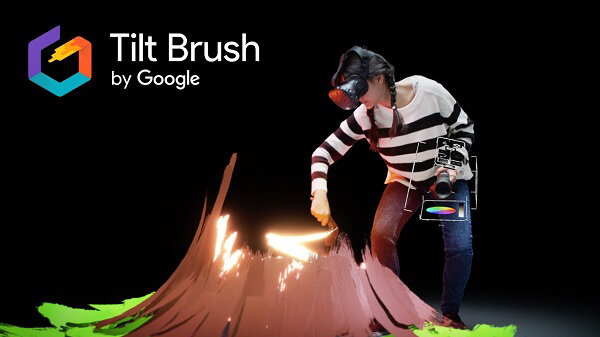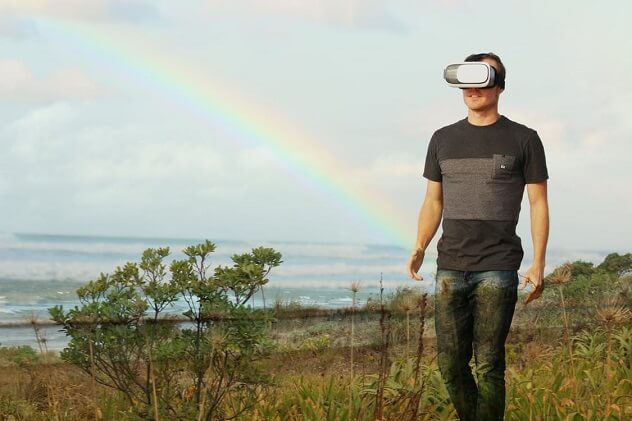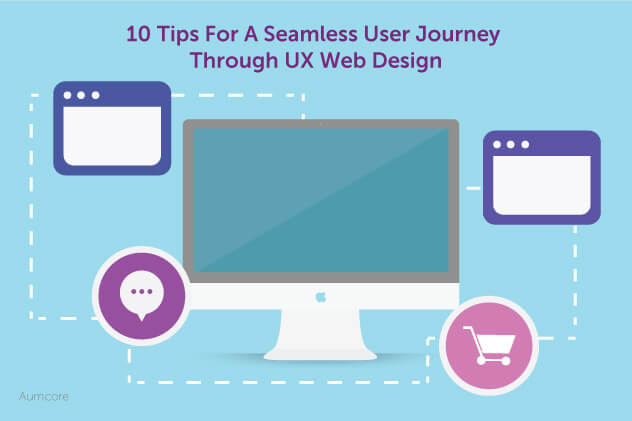The virtual reality experience begins before you enter any world dominated by pixels; it begins the moment you pick up a headset. It’s one of those things that brings back childhood memories and longings. You remember that game you played that made you wish you could jump right in alongside your favorite character. That movie so beautiful you spent hours fantasizing being part of it.
Virtual reality epitomizes immersive storytelling. It’s better than the best television in the market because even with it, you’re not actually part of the story; you’re watching through a window. It offers a huge potential in terms of engagement and spurs the evolution from spectator to active participant.
The Many Facets of Virtual Reality

Virtual reality, as it’s used today, can mean anything from 360-degree videos, in which you’re an active participant, to immersive environments that you can control with a touch. If we think of VR as having an immersion scale, 360-degree videos are on one end and PC-based VR headsets are on the other. One allows you to participate in the action and the other to actually control what happens.
360° videos allow you, the participant, to see things from every angle, drastically increasing engagement. The advent of spatial audio on sites like YouTube is adding to this increase by letting you “listen along as you do in real life, where depth, distance and intensity all play a role.” It isn’t exactly VR, which is more immersive and offers more opportunities for interaction, but it’s close. As you travel along the immersion scale you pass through mobile VR, made easy by devices such as Google Cardboard, and end up with PC-based VR. This is where you can truly dive into the digital world and even create your own with the Tilt Brush, a device made by Google that lets you paint in 3D space with virtual reality. Ever wanted to build a castle? How about a 50-foot dragon? Well, now you can. If you can think it, you can create it.

Advertising with Virtual Reality
Advertising with virtual reality is immersive, impactful, and memorable; the perfect formula for an ad campaign. It’s immersive because it amplifies reality and enhances your senses. You’re not watching a car chase, you’re in the car doing the chasing. It’s impactful because it allows consumers to experience a product or service in a way that they’ve never been able to do so before. You’re not watching a video of a sunny beach, you’re stepping into the beach itself and getting a look at what to expect before booking that trip. It’s memorable because it makes things more memory-like. You’re not remembering watching a car ad, you’re remembering being in the car seat as you speed along the highway.
Julian Eggebrecht, Hulu’s VP of technology, rightly stated that “if you want to be in a movie theater, it has to be the largest movie theater you’ve ever experienced. If you’re in a living room, it has to be in a really cool city. If you’re going to be on a beach, it has to be an exceptionally relaxing beach.” Virtual reality is the tool that takes the real world and improves it. It answers questions like “how do you make typing not suck?” by making it feel as if you’re playing the drums instead.
When The New York Times launched its NYT VR app in November 2015, it became the most successful app launch in NYT history. They soon had advertisers like Cadillac, Ford, Lufthansa and Hilton preparing VR content, and 58% of users coming back month-to-month to the app. Why? Because it’s what people want. According to Google, global search interest for VR has grown by nearly 400% in the past year. A study by Ericsson ConsumerLab also found that people are interested in virtual reality for everything, from a VR dating scene to immersive video games, with the majority interested in the possibility of VR shopping. Moreover, Samsung recently revealed at CES, the global technology tradeshow, that they’ve already sold more than five million VR headsets. This, coupled with the fact that all you need is a smartphone to enter the virtual world, creates a population primed for VR.

Virtual Reality Advertising Done Right
While VR is still a novelty for most brands, there are a handful of examples that show what a successful VR campaign looks like. AT&T has a safe driving campaign titled, “It Can Wait,” that includes a 360° video simulation of the real consequences of looking at a phone while driving. BMW has a 360° video ad showcasing a car race that racked up over five million views in two months, winning Youtube’s award for the “Most Viewed 360 Degree Video Ad.” Andrew Lloyd Webber’s latest show, School of Rock, sparked interest and drew attention by creating Broadway’s first 360° video for Youtube. It received one million views in three days, created a 550% spike in traffic the week it premiered, and a 160% spike in the show’s ticketing website during the launch week. Take a look at this site for more examples of VR advertising done right.

Virtual Reality: The Future of Advertising?
Virtual reality technology is improving every day and so are the opportunities to employ it. Once a consumer is strapped into a VR headset immersion goes up, increasing empathy and making messages more impactful and memorable. As an added bonus, where else can people look at but your ad when they’re wearing a headset that cuts off all other distractions? That’s right, no more pesky notifications taking over over attention spans. Once you’re in, you’re all in.





Tell us your thoughts in the comments